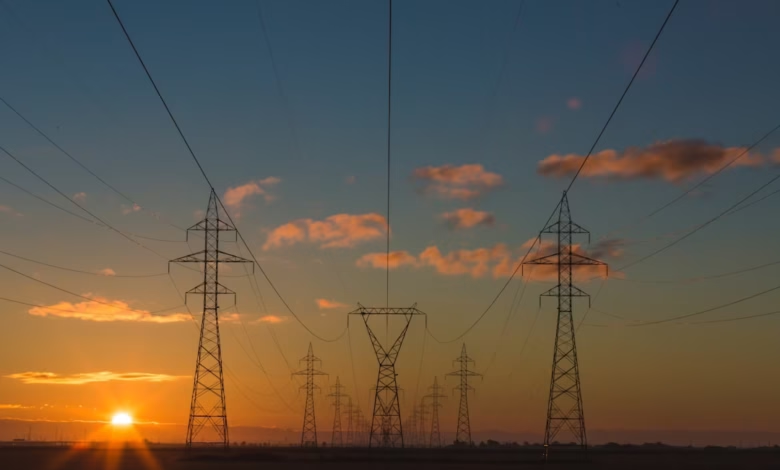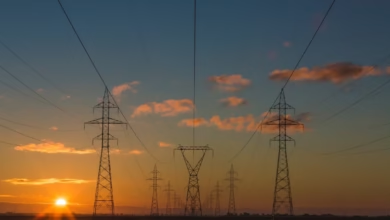Harnessing Thermal Energy: Key Innovations for Energy Production and Storage in the Renewable Energy Transition

In today's rapidly evolving energy landscape, thermal energy stands out as a pivotal player in the ongoing energy transition. With the world increasingly seeking alternatives to fossil fuels and exploring avenues for enhanced energy efficiency, thermal energy offers a versatile solution for both energy production and storage. This article delves into the multifaceted role of thermal energy, examining its contributions to renewable energy markets and its potential impact on climate change mitigation.
As global energy trends shift towards sustainability, innovations in energy storage are becoming essential to maximize the potential of green energy sources such as solar power and wind energy. Thermal energy not only complements these renewable technologies but also plays a crucial role in the integration of energy systems, including smart grids and distributed energy networks. Furthermore, as nations grapple with energy policy and the economics of energy investments, understanding thermal energy's position within the broader context of energy security and climate action is vital.
Join us as we explore the significance of thermal energy in shaping the future of energy production, its innovative applications in energy storage, and its critical role in supporting the transition to a low-carbon economy.
- 1. Understanding Thermal Energy: A Key Player in the Energy Transition
- 2. Innovations in Energy Storage: How Thermal Energy Enhances Energy Efficiency
- 3. The Role of Thermal Energy in Renewable Energy Markets and Climate Change Mitigation
1. Understanding Thermal Energy: A Key Player in the Energy Transition
Thermal energy is emerging as a pivotal component in the global energy transition, providing solutions that bridge the gap between traditional fossil fuels and renewable energy sources. As the world moves toward sustainable practices, understanding thermal energy's role is crucial for enhancing energy efficiency and ensuring energy security.
The energy landscape is rapidly evolving, with renewable energy sources such as solar power, wind energy, and hydropower gaining momentum. However, the inherent intermittency of these sources necessitates an efficient energy storage system to manage supply and demand effectively. Thermal energy can play a significant role in energy storage by capturing excess heat and converting it into usable energy during peak demand periods. This capability not only maximizes the utility of renewable energy but also enhances overall energy efficiency.
Moreover, thermal energy systems can complement existing energy markets by serving as a flexible and reliable backup to renewable sources. For instance, combined heat and power (CHP) systems can utilize bioenergy or natural gas to generate electricity while simultaneously providing heating. This dual functionality reduces reliance on fossil fuels and contributes to a more resilient energy infrastructure.
In the context of global energy trends, policies promoting energy innovations and investments in thermal energy technologies are essential. Governments are increasingly recognizing the importance of energy R&D to develop advanced thermal systems that can integrate with smart grids and distributed energy resources. Such integration facilitates better energy transportation and management, supporting the overall energy transition.
Another significant aspect of thermal energy is its compatibility with hydrogen energy production. Utilizing thermal processes for hydrogen generation enhances the potential for hydrogen as a clean energy carrier, further supporting the shift away from fossil fuels. Additionally, carbon capture technologies can be integrated into thermal energy systems, enabling the reduction of greenhouse gas emissions and contributing to climate change mitigation efforts.
As countries strategize their energy policies, understanding the multifaceted benefits of thermal energy will be vital. By embracing thermal energy within their energy portfolios, nations can ensure a balanced approach to energy imports and exports, bolster energy security, and foster a sustainable energy future. The ongoing developments in thermal energy not only highlight its importance in the current energy landscape but also signify its role as a key player in the transition to a greener, more sustainable world.
2. Innovations in Energy Storage: How Thermal Energy Enhances Energy Efficiency
As the world navigates the complexities of energy transition, innovations in energy storage are becoming pivotal in enhancing energy efficiency. Among these innovations, thermal energy stands out as a versatile solution that not only aids in energy production but also plays a crucial role in energy storage. By utilizing heat for energy, we can optimize the use of renewable energy sources such as solar power and wind energy, significantly reducing dependence on fossil fuels and nuclear energy.
Thermal energy storage systems, such as molten salt storage and phase change materials, allow excess energy generated during peak production times to be stored and utilized later. This capability is essential in balancing energy supply and demand, particularly as the global energy markets shift towards more intermittent sources of green energy. By integrating thermal energy storage with smart grids, energy efficiency can be maximized, ensuring that energy is available when and where it is needed most.
In addition to improving energy efficiency, thermal energy storage also contributes to energy security. By enabling the storage of energy during periods of low demand, countries can better manage their energy imports and exports, reducing reliance on fossil fuel imports and enhancing energy independence. This aligns with current energy policy objectives aimed at promoting sustainable energy practices and combating climate change.
Moreover, the development of advanced thermal energy technologies is spurring energy investments and research and development (R&D) initiatives. As energy innovations continue to emerge, thermal energy is increasingly viewed as a critical component of a diversified energy portfolio that includes bioenergy, hydropower, and hydrogen energy. These advancements support the transition to a more resilient energy system, capable of meeting the demands of electric vehicles and other emerging technologies.
In conclusion, thermal energy plays a vital role in enhancing energy efficiency within the context of global energy trends. By leveraging thermal energy for energy storage, we can foster a more sustainable and secure energy future that supports the ongoing transition toward green energy. The integration of thermal energy storage into our energy systems not only bolsters energy economics but also helps mitigate the impacts of climate change, making it a crucial element in the path toward a sustainable energy landscape.
3. The Role of Thermal Energy in Renewable Energy Markets and Climate Change Mitigation
Thermal energy plays a pivotal role in the ongoing transition towards renewable energy markets and climate change mitigation. As the world shifts away from fossil fuels, the integration of thermal energy systems into green energy solutions becomes increasingly important. By harnessing heat from various sources, including solar power and bioenergy, we can enhance energy efficiency and optimize energy storage, which are critical components in the fight against climate change.
In renewable energy markets, thermal energy contributes significantly to energy storage solutions. For instance, concentrated solar power (CSP) plants utilize thermal energy to store heat, which can be converted back into electricity when needed, balancing supply and demand. This capability supports energy security and stabilizes smart grids, allowing for the seamless integration of intermittent sources like wind and solar power. As energy markets evolve, investments in thermal energy systems will be crucial to ensuring reliable energy transportation and distribution.
Furthermore, thermal energy's role extends into carbon capture technologies, which aim to reduce greenhouse gas emissions from various energy sources. By combining thermal processes with carbon capture, we can significantly lower the carbon footprint of energy production, including nuclear energy and hydropower. This synergy not only enhances energy economics but also aligns with global energy trends focused on sustainability and resilience.
The energy transition is not just about replacing fossil fuels with renewables; it also involves innovating how we utilize and store energy. Distributed energy systems, which include thermal energy solutions, enable local energy production and consumption, reducing the need for energy imports and enhancing energy exports. By prioritizing energy R&D, we can unlock new thermal energy technologies that complement electric vehicles and hydrogen energy initiatives, further supporting our climate goals.
In conclusion, the role of thermal energy in renewable energy markets is multifaceted, impacting energy efficiency, storage, and overall climate change mitigation strategies. As nations implement robust energy policies that promote investment in these technologies, the potential for thermal energy to contribute to a sustainable energy future is immense.
In conclusion, thermal energy is emerging as a pivotal component in the ongoing energy transition, offering promising solutions for both energy production and storage. As we navigate the complexities of global energy trends, the integration of thermal energy into our energy markets not only enhances energy efficiency but also strengthens energy security by reducing our reliance on fossil fuels and nuclear energy. Innovations in energy storage, such as thermal batteries, are poised to revolutionize how we utilize renewable energy sources like solar power and wind energy, ensuring a more stable and reliable energy supply.
Moreover, as climate change continues to pose significant challenges, the role of thermal energy in mitigating its impacts cannot be overstated. By supporting carbon capture initiatives and promoting the use of bioenergy and hydropower, thermal energy contributes to a greener energy landscape while fostering energy investment and diversification. Furthermore, with the rise of smart grids and distributed energy systems, thermal energy is set to play a crucial role in the future of energy transportation and the development of hydrogen energy solutions.
Ultimately, embracing thermal energy as part of our energy policy will not only aid in achieving climate goals but will also enhance our overall energy economics, ensuring a sustainable and secure energy future. As we move forward, continuous energy R&D will be essential to unlock further innovations and maximize the potential of thermal energy in our pursuit of a cleaner and more resilient energy system.





